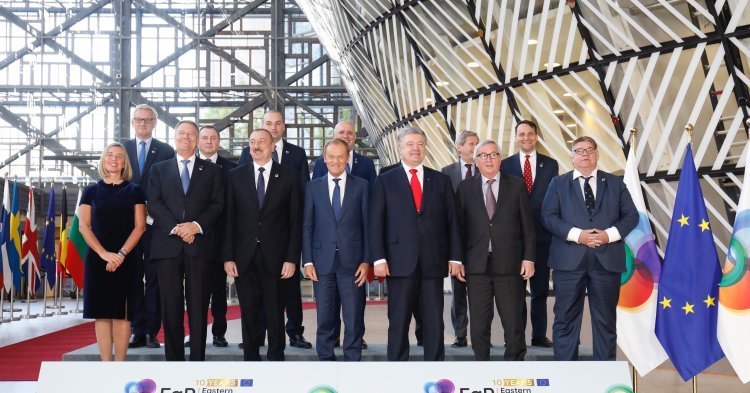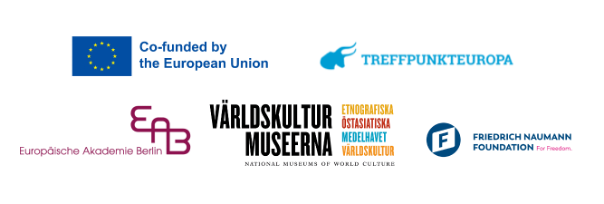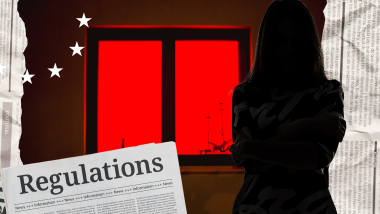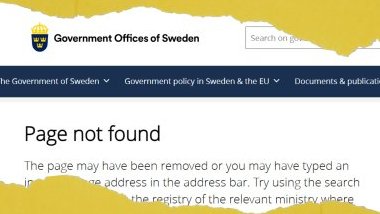What is the “Eastern Partnership”?
Ever since the EU Eastern enlargement, states like Poland sought to foster cooperation with the formerly soviet countries to the east of the European Union. Specifically the aim was to build a counterweight to the southward-oriented Union for the Mediterranean, which connects the EU to the Mediterranean countries in North Africa and the Middle East. Catalysed by the Russian invasion of Georgia in 2008, Poland and Sweden presented a plan to create the Eastern Partnership, which was swiftly implemented, doubling the funds allocated for the EU Neighborhood policy. Despite this scale of the project, animosity towards the project by some Western European countries remained, especially criticising the exclusion of Russia from the program. In fact, the Eastern Partnership includes six former soviet countries in Eastern Europe and the Caucasus region, namely Belarus, Moldova, and Ukraine, as well as Georgia, Armenia, and Azerbaijan.
The goals of the Eastern Partnership are twofold. First and foremost, it aims to strengthen bilateral cooperation between the European Union and the six countries, seeking to formulate Association agreements as part of the DCFTA (Deep and comprehensive Free Trade Area). A key point here is that unlike participant countries of other parts of the EU Neighborhood policy like the Union for the Mediterranean, the countries of the Eastern Partnership are seen as potential future member states of the European Union.
Secondly the program also fosters multilateral cooperation between participating countries. This is another key difference of the Eastern Partnership compared to other projects and programmes of the EU Neighbourhood Policy, such as the similarly named Southern Partnership, which only serves for the EU to unilaterally strengthen economic ties with North African countries and the Middle East. With the Eastern Partnership instead, the EU employs its tools of foreign policy in the fierce belief that it is in Europe’s interest to have strong, independent and democratic nations in Eastern Europe. This becomes especially apparent in the face of the threats and wars launched against them by Russia.
Association and the three pillars of the Eastern Partnership
Concretely the tools of the Eastern Partnership consist of several elements which can roughly be divided into three pillars:
- Firstly, the Eastern Partnership mostly deals with specific financial support of projects. Starting with somewhat limited funds at first, the program has seen a steady increase in its budget, which then is allocated through the European Investment Bank (EIB) or specific trust funds. Central to financial support are selected projects aimed at institutional growth and the strengthening of civil society.
- Secondly, other more direct measures broadly encouraging civil society include the participation of the Eastern Partnership countries in the EU’s traineeship scheme.
- The third pillar concerns the use of political will and bargaining power to deeply tie the Eastern Partnership countries and the EU with each other on the road of a potential EU enlargement. This specifically refers to the aforementioned association agreements, expanding free trade between the signatories and abolishing major economic and social hurdles.
The impact these DCFTA association agreements can have is most apparent when looking at the case of Ukraine. After Ukraine’s last-minute withdrawal from the already finalised association agreement, the Maidan revolution broke out in 2014, toppling Viktor Yanukovych. Subsequently Russia illegally annexed the Crimean Peninsula and started its still ongoing war of aggression against Ukraine. Jarringly, and indicative of the EU’s position on Eastern Europe and Russia at the time, the 5-year anniversary summit of the Eastern Partnership, specifically convened to assess the situation in Ukraine, was attended by not a single EU leader.
Eastern Partnership Special Envoys and Ambassadors discussed today in Brussels new ideas for the EaP policy. It has to offer resilience, complement the enlargement preparations of the Associated partners and answer differentiated expectations of all partners. #StrongerTogether pic.twitter.com/dpidoxpON0
— EasternPartnership (@EastPartnership) September 15, 2023
This disinterest and half-hearted support of a significant neighbourhood policy with Eastern Europe stood in stark contrast with the increasing budget of the Eastern Partnership. Despite the decision maker’s disregard the EU has also made considerable efforts to popularise the Eastern Partnership in both participating countries and the EU. The launch of campaigns under the label “EU Neighbours east” targets youth in particular by offering the “Young European Ambassador” program to become advocates for the Eastern Partnership. Whether this effective yet not vocal support of the Eastern Partnership will be a long-term development remains to be seen.
Two Differing paths
Taking a look at the individual cases of the Eastern Partnership members, it is clear that there are two groups of countries. Armenia, Azerbaijan and Belarus represent one. These countries, especially Belarus and Azerbaijan, showed that they do not want economic nor strategic support by the European Union. Belarus suspended its participation in the EU’s Eastern Partnership in 2021 as a retaliation after the sanctions imposed by the EU in the aftermath of the forced landing of a Ryanair aircraft en route from Greece to Lithuania.
just like in recent Eastern partnership meetings #Belarus is "represented" by an empty chair at today's foreign affairs ministerial in Brussels. 🇺🇦🇲🇩🇬🇪🇦🇿🇦🇲
— Rikard Jozwiak (@RikardJozwiak) December 11, 2023
Azerbaijan also showed that it is not interested in the program since 2015. We asked Prof Dr. Eckart Stratenschulte of the Free University of Berlin what the reason would be why Belarus and Azerbaijan don’t want to be involved in the EU’s neighbourhood policy. Firstly, both countries are dictatorships, and having a good relationship with the EU would imply changing their governing system as a prerequisite set by the EU. Under Lukashenko’s regime, that would not be possible. As Prof. Stratenschulte explains, Azerbaijan is especially in no need of an association agreement with the EU, because it rather profits from the EU as a customer in its natural resource business.
Armenia, on the other hand, represents a country that might be able to benefit from the Eastern Partnership more freely. However, unstable political institutions and strong Russian influence in Armenia’s domestic politics led to the cancellation of a 2014 draft association agreement and has not brought forward a new path for a stronger relationship with the EU. For now, the Russian grip on Armenia is too strong for the country to set the processes in motion to join the EU. In contrast, the Eastern Partnership allows them to remain in a loose bilateral relation with the EU, even without association.
The second group consists of Ukraine, Moldova and Georgia. Last year the European Parliament granted Ukraine and Moldova the candidate status, and in the case of Georgia, the potential to gain candidate status later. Of course, this candidate status underlines the strong relationship that these countries have with the EU, but it was also meant to be a specific symbol due to the aggressions of Russia against Ukraine after Russia extended its war into a full-scale invasion. Therefore, the Eastern Partnership cannot be credited for granting them this opportunity, especially because the Eastern Partnership was never meant to be an explicit policy to guide these countries into the European Union. Rather it was supposed to work the other way around - always aiming to keep them out of the European Union, while fostering good relations, as Prof Dr. Eckart Stratenschulte puts it.
Will there be a future for the “Eastern Membership”?
Whilst the Russian invasion of Ukraine has undeniably created a never-before-seen interest of the EU in Eastern Europe, the future and the use of the Eastern Partnership program remains elusive. The aggressive actions of Russia have specifically led to a realisation in Europe that EU foreign policy in Europe must provide some basis on which bilateral relationships can evolve into a path to closer ties and even EU membership itself. These decisions of candidacy, negotiations etc. are however high-stake politics that are dealt with on higher, more direct levels, also explaining the creation of new forums such as the European Political Community.
Importantly, these developments do not necessarily threaten the work, achievements and even existence of the Eastern Partnership, when considering the evaluation of Prof. Dr. Stratenschulte that the Eastern Partnership was never intended to be a tool facilitating the accession into the EU. Instead, the Eastern Partnership remains a vital part of EU policy. Even though it might not generate as much attention like a meeting of all European leaders, it lays the groundwork making a potential membership even possible, either through concrete agreements, like association through DCFTA or more indirect support of civil society. It is there where the EU neighbourhood policy excels, forging partnership that paves the way for membership.






Follow the comments: |
|
